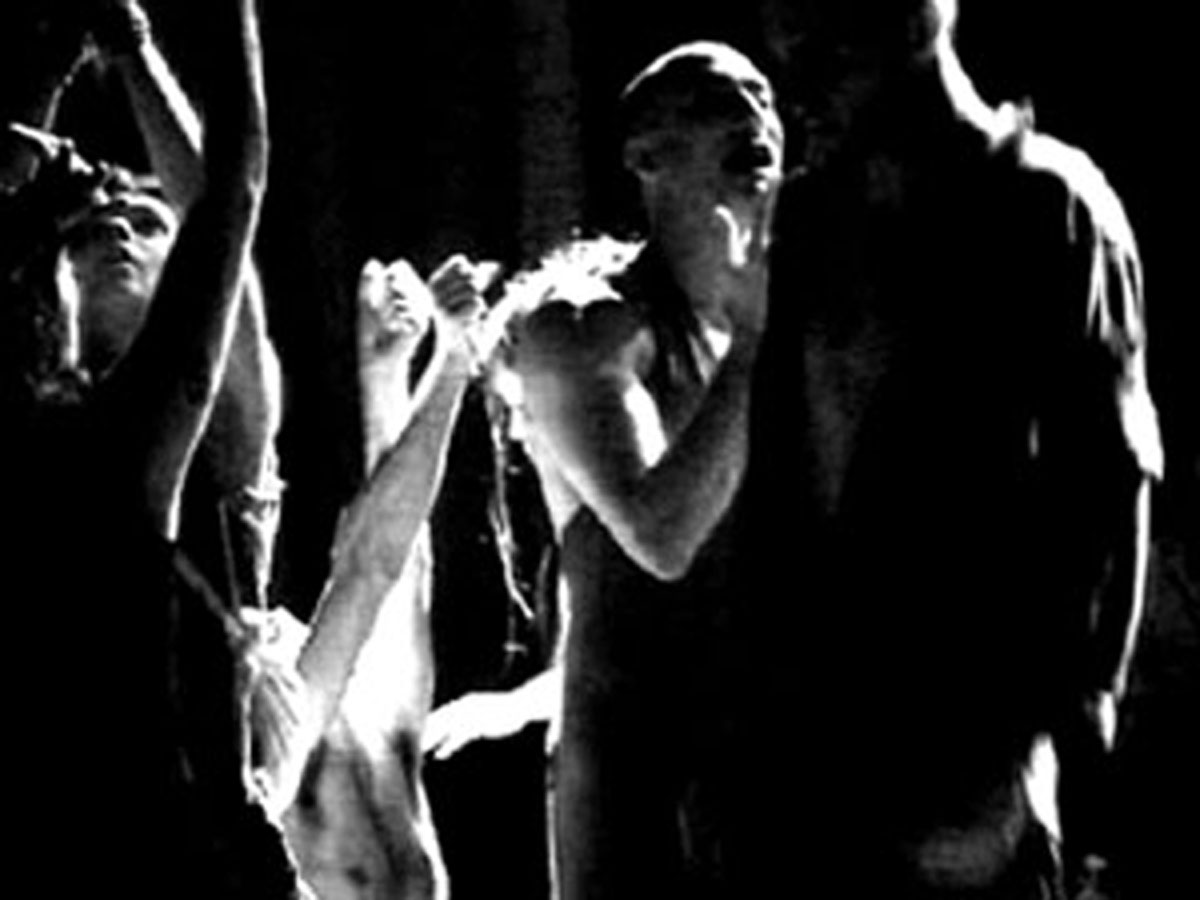
GROUP
RITUAL DYNAMICS
Asocial Intent,
The Function of Shock, Soulwork
©1977 Antero Alli
ASOCIAL
INTENT — SOCIAL INTENT
Why do people meet for rituals? People usually only
disrupt their daily routines and get out of the
house for good reasons. Often enough, this amounts
to meeting specific needs, whether we are cognizant
of these needs or not! In more primitive times,
people left their homes to assure their survival
or their happiness or appease the gods of their
religion. They left the hearth to hunt game, gather
grain, and/or roam the elysian fields for exotic
fungi and midnight visions. I perceive two primary
motives for people to leave their homes and do rituals
together and I call these: social and asocial.
As
ritual intents, each produces different results.
Social intentions create social rituals; asocial
intentions, asocial rituals. Both social and asocial
rites can mingle to produce hybrids of group activity;
part social, part asocial. Social and asocial intentions
can also be isolated for the purpose of exploring
and distilling their distinct functions, expressions
and rewards.
Social rituals involve any activity satisfying
social needs: for support, sense of belonging, self-importance
and status, flirtation and courtship,
small talk, etc. Social rituals are important to the
socialization process, as well as, the development,
integration and stabilization of the personality. Social rituals have their place in meeting social needs. As an end
in itself, however, social rituals act as a spiritual
cul-de-sac where consciousness conforms and narrows
to the “reality tunnels” of local consensus
maps, dogmas, and socially-accepted protocols. When social rituals
can be seen in context to the asocial, their purpose
undergoes a transformation. More on this later.
Asocial (not to be confused with antisocial) rituals refer to any group dynamic that bypasses or frustrates social needs in lieu of realizing asocial goals such as increasing self-commitment, intimacy with void (No-Form), Verticality and Source Relations; monasteries and nunneries offer classic examples of asocial rituals and lifestyles. Though many religious traditions have designed elaborate social rituals and moral systems, these are generally not meant as pathways to mystical experience. They have, more likely, been developed to integrate the person more firmly into daily community life.
This paratheatrical medium requires an asocial intent
to work, one that elevates individual integrity
and autonomy above the satisfaction of social
needs. By cultivating an asocial climate or spirit,
a unique kind of group interaction and group unity can evolve through
deepening tolerance and respect for differences,
the space around each person, allowing each individual's truth, no matter what its nature
(see Paratheatrical
Orientation). Reflecting on these dual ritual
intents — asocial and social — can help determine
which rituals might be possible for any given situation and group,
despite what that group wants, fantasizes about,
or expects to happen. Some groups are simply more
inclined towards the social, while others are more
inclined to the asocial.
MORE ON ASOCIAL GROUP DYNAMICS
RITUAL
AUTHENTICATION
Regardless of script, choreography or paraphernalia,
what authenticates any paratheatrical ritual is an awareness and acceptance of
its existing elements: the specific individuals involved,
their limitations and talents and
the real-time state(s) they are in when they arrive.
To ignore these vital properties is to overlook
the innate conditions of the experiment and flail
about in self-imposed agendas. Though there’s
nothing inherently wrong or bad about self-imposed
agendas, they obscure the perception of existing
group dynamics with projections and expectations
of preconceived outcomes.
Asocial ritual bypasses social considerations such
as politeness and small talk, towards a
receptivity to the autonomous archetypal
forces governing existence as we know it and as
we don’t know it. These archetypal dynamics
can be genuinely perplexing to the social ego and
its literalist conceptual mind. They are autonomous in that they come and go as they will. Archetypes are not subject
to our attempts to manipulate their powers, let
alone comprehend them. An asocial climate can be
fueled by continual and conscious intimacy with
void. In this ritual medium, this potential state
is accessed in a standing meditation called No-Form which acts as a bridge between
the internal landscape of archetypal material (Masculine
and Feminine, the Four Elements, Death and Rebirth,
Chaos and Order,...ad infinitum) and external expression
through action and interaction.
SHOCK
and SOULWORK
Successful social rituals satisfy our most basic personality needs, whereas effective asocial rituals subject this same ego to repeated annihilation. Why? Continual confrontations with the Self always act as a defeat for the ego. Reality distorts our ideals. The defense mechanisms of self-denial naturally grow brittle in the face of greater truths. With repeated exposure to these truths, mechanistic defensiveness dissolves. If and when the ego learns to relax, we experience less resistance to change.
With
enough transformation, the personal becomes the
political. One begins transmitting power -- from
the changes and/or shocks one has personally absorbed
-- out to the world beyond ourselves. If we fail
to approach our own changes with an awareness of
others, we human "shock absorbers" can
run the risk of turning into obnoxious agents of
change -- transformation junkies -- heralding change!
Change! Change for the sake of change! How redundant.
There’s a fine line between being right and
being toxic. If you can respect the mystery of vertical
sources — your own and others’ —
it may be possible to absorb, integrate and transmit
life’s shocks with greater respect for each
other.
Soulwork amounts to a kind of “growing-up”
or maturing process of claiming responsibility for
your survival needs: security (food, home and a
job) emotions (status, support, bonding), intellect
(solving your own problems, using your head to survive)
and social/community (friendship, love, ethics,
belonging.) A fulfilled and nurtured ego is more
willing to endure the shocks of repeat vertical
contact, not to mention the unexpected shocks real
life delivers. When approaching ritual as a means to trigger shocks, we become aware of a kind of intentional suffering towards enduring and bearing the existing conditions
of our lives. With this kind of "bearing up",
self- compassion develops as a basic for showing more compassion to others.
When we are ready to live in ways that show more
tolerance to the soul’s needs, our manifestations
grow more tolerable to the souls of others.
When the reality structures we have taken for granted
no longer suit us, a spiritual
discontent erupts from the very core of our being.
The chaotic nature of these internal “emergency
states” demand outlets: any creative, physical,
emotional, intellectual mediums that allow expression
of the emerging core of our being. To minimize ego-inflation,
be attentive to self-centered motives such as advancing
your own survival, gratification or well being.
To keep the ego in check, look to transpersonal
causes to serve that can circulate the heat, light
and vision of your molting new self. A transpersonal
cause can manifest as any organization or group
or mission that acts as a vehicle for benefitting
and serving something greater than just yourself.
ON SELF-DELUSION & OTHER PITFALLS IN PARATHEATRE
ANIMAMUNDI
The cultivation of the personality for transpersonal
causes reflects what poet/mystic W.B. Yeats called
the animamundi, or planetary soul. This notion of
planetary soul is no ephemeral entity that merely
inhabits a physical body. The animamundi refers
to a universal cohering substance interconnecting
self and cosmos as one; soul as connecting fiber.
When personal growth can serve a higher end than
itself, ego becomes a candidate for creative (conscious)
sacrifice and its status elevated to that of an
offering to Source. Mystics die many times every
day.
As personality develops, we sometimes outgrow previously
cherished interpersonal connections — friends,
the community, the world at large — as a part
of a molting, or crisis in consciousness. When we
find ourselves frustrated by obsolete need structures,
friendships, community niches and public images,
we may begin to wonder if there is something wrong
with us. Or if we are going crazy. If we can begin
releasing our attachments to self-images, social
forms and need structures that are currently immobilizing
us with inertia, we may be fortunate enough to make
meaningful changes where we live and avoid uprooting
our lives to start over somewhere else.
Successful social rituals support the nurturance
and development of a strong (not big) ego. A strong
ego is not defined by itself; anybody can become
a legend in his or her own mind. An ego grows strong
by the flexibility and resilience it develops through
bridging inner and outer worlds, through interaction
and participation with those sharing common-unity,
or community. A strong and flexible ego develops
through ongoing commitment to meaningful connections
with others and the world at large. Unless these
connections are maintained, the ego can grow fragile
and become easily overwhelmed by its own alienation.
Any ego convinced of its own importance, without
meaningful interpersonal connections to support
that notion, must continue convincing itself to
maintain the fantasy. You can begin self-correcting,
or healing, this sad malady by making an effort
to get your attention off yourself and onto the
space around you. The opportunity to practice this
discipline of outward-directed attention avails
itself anytime in life and at the start of each
and every lab session though the cultivation and
maintenance of a rare area. This starts with relating
to the space itself as a value: space as sacred.
FREQUENTLY
ASKED QUESTIONS
What
if, when I enter one side of a polarity, I don’t
want to move to the other side?
Stay in that side until you meet your needs. Sometimes
our lives are more one-sided than we think. Given
the chance to gain access to a side of your nature
you might normally avoid can be a little like finding
drinking water in a desert. If there’s an honest
thirst for an experience, drink. Stay with it; find
out what you’ve been missing.
What if, after stepping
inside, I don’t feel anything and I am not
moved at all?
Feeling nothing and
not being moved cna be legitimate states since they actually exist. Stay with these states, no matter how discomforting,
and see for yourself. That they emerge at all may
signal their denial in a previous nonritualistic
setting, i.e., your life outside the lab. The key
here is follow-through. Stick with whatever comes
up no matter what its nature and no matter how it
appears; stay with it. With enough self-commitment,
your integrity as an individual develops and that
integrity is what makes for scrupulous ritual.
What if I can’t
stop thinking? What if I’m deluged by my concepts
and opinions of the polarity, rather than connecting
with the living forces?
All of these images may not belong to you in the
first place. If they don’t go away and insist
on buffering you from a more direct experience,
do something unexpected. Temporarily become the
image or stereotype in question; take time to personify
it. Make a fool of yourself. Be superficial; who
said ritual has to be dead serious? Give it physical
and vocal expression. Accept the image and try it
on for size, in other words. Resisting the residue
of monkey mind has never made the residue go away.
By releasing some of the charge around images, maybe
a more open quality can emerge. It’s that openness
and receptivity which allow us to be impressed; the deeper the receptivity, the deeper the impression.
(VERTICAL POOL PUBLISHING, 2003)
Related Issues:
